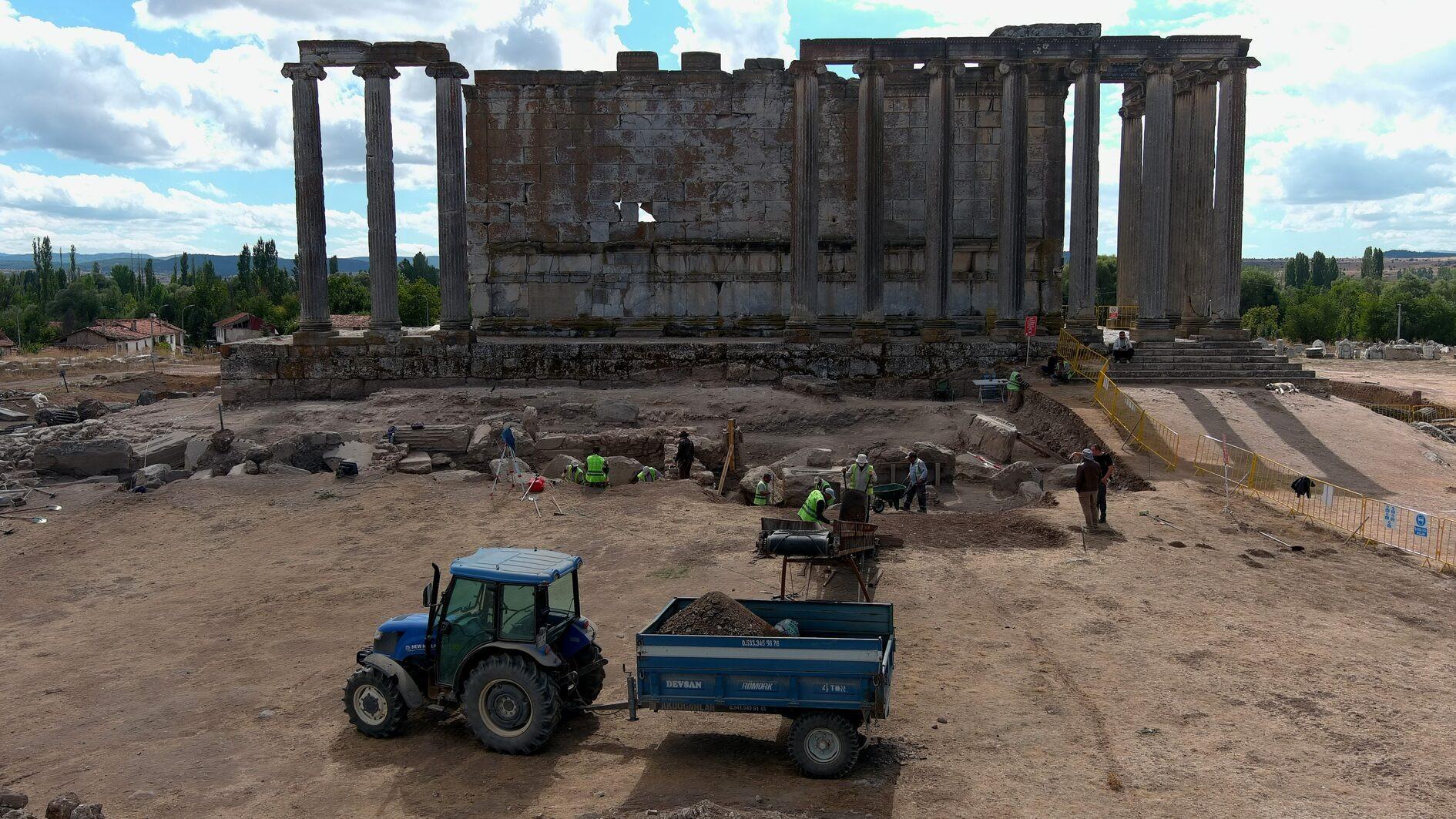
Archaeological excavations in the ancient city of Aizanoi, located in the western province of Kütahya's Çavdarhisar district, are bringing to light architectural remnants belonging to the Zeus Temple.
Aizanoi, included in UNESCO’s Tentative World Heritage List in 2012, is home to one of the best-preserved Zeus temples in the world. Excavation work continues at the site, supported by the Culture and Tourism Ministry’s Directorate General of Cultural Heritage and Museums under the “Heritage for the Future Project.” The project involves academics from various universities, 10 technical staff and 50 workers.
The excavations are carried out under the leadership of Professor Gökhan Coşkun from Kütahya Dumlupınar University's Archaeology Department.
Coşkun told state-run Anadolu Agency that since June, excavation work has focused on the area surrounding the Zeus Temple. He noted that the temple, which was the most important structure of the ancient city during the Roman period, has stood for around 2,000 years and gained worldwide recognition as the best-preserved Zeus Temple. However, thousands of years of earthquakes and natural disasters have affected and continue to threaten its structural integrity.
Construction of the temple began around 92 A.D. during Emperor Domitian’s reign and was completed in the first half of the 2nd century under Hadrianus. The temple was later converted into a church during the Byzantine period and was used as a kind of fortress by the Çavdar Tatars, who settled in the region in the 13th century.
Excavations aim to uncover missing architectural fragments for use in restoration. “We started to excavate around the structure to bring to light pieces buried under the soil for restoration purposes. We observed far more preserved architectural elements than expected. During the work, we also confirmed that the temple stands on a podium approximately 3 meters high and measuring 55 by 35 meters. We also discovered parapet blocks belonging to this podium,” Coşkun said.
Graves discovered around temple
Coşkun noted that excavations around the temple revealed graves from the Byzantine era. “In the southeast corner of the temple, we began uncovering numerous graves. These graves were made during the Byzantine period when the temple functioned as a church. So far, we have identified 19 graves, but we expect the number to increase as the excavation expands,” he added.
The team also discovered that the temple courtyard is entirely paved with marble, some of which has been exceptionally well preserved and has now been exposed.
Coşkun stated that restitution, survey and restoration projects have already been prepared. Excavation and preparatory work will continue uninterrupted until the end of the year to allow restoration work to begin next year.
He also emphasized the strength of the temple’s foundation, saying, “Beneath the temple is a vaulted gallery called a ‘crypta.’ Many of the stones remain exactly in their original positions, providing a very solid base for the temple.”